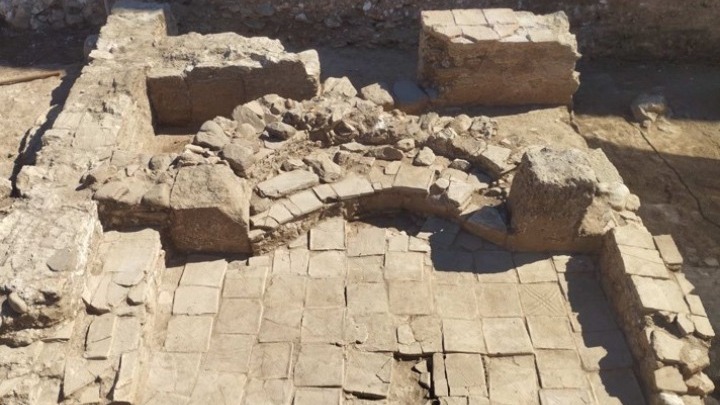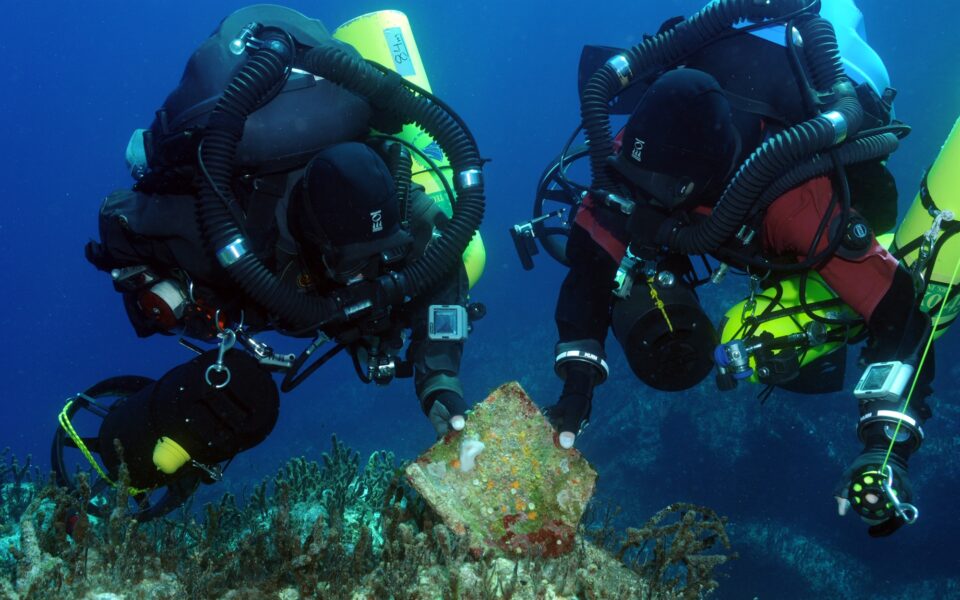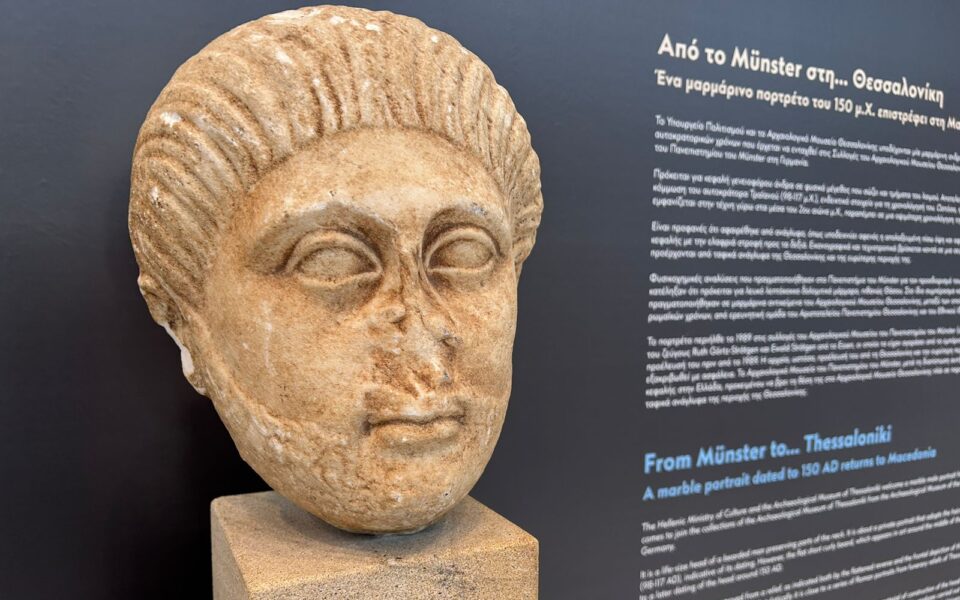New book takes crack at Antikythera Mechanism
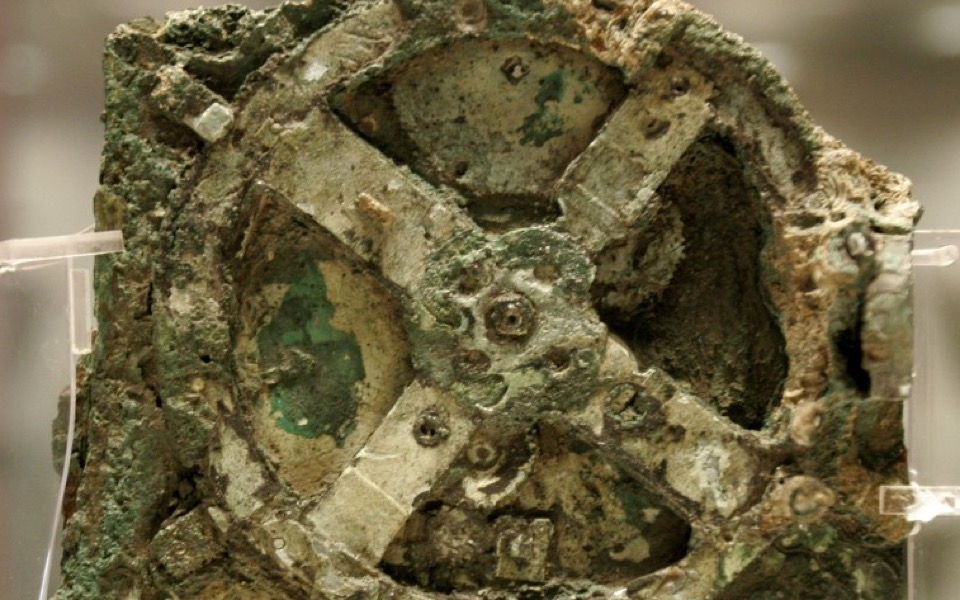

It was the morning of May 18, 1902, when Kythera MP Spyridon Stais visited the National Archaeological Museum in Athens, going straight to the hall containing the finds from an ancient wreck off Antikythera. When the wreck had been discovered two years earlier, he was the minister of ecclesiastical and public education, but, even more importantly, he was the government official who approved the first underwater archaeological expedition to ever take place in the world, generously bankrolled by a state that had just been morally and financially devastated by its defeat in the 1897 Greco-Turkish War.
A man of education and vision, he knew that archaeologists were onto something big, but his interest was also spurred by the fact that the ship had been found near his native island, which lies off the southeastern coast of the Peloponnese. As he examined the bronze objects discovered at the bottom of the sea, and especially the fragments of statues like that of the Ephebe, his attention was arrested by three specific pieces. It was with great astonishment that he noticed a system of cogs and faint writings on the surface of one of the fragments. It was a monumental discovery which he conveyed to his cousin, archaeologist Valerios Stais, who became the first expert to examine them.
By making this astute observation, Spyridon Stais inadvertently helped rewrite the first chapters on the history of science and technology. The path to an empirical assessment of what these fragments were was neither linear nor smooth and countless conspiracy theories sprang up over the decades, the most outlandish of which was Swiss author Erich von Daniken’s claim that the mechanism they came from was so advanced it must have belonged to an extraterrestrial civilization. The truth is that until 2005, almost a century after Stais stepped into the Athens museum, the Antikythera Mechanism had been studied by only a few dedicated researchers working on their own. They did not exchange views and stuck to their respective theories with an almost zealous passion. No one could agree on whether it was an astronomical or nautical instrument. On what it calculated or how it worked. On where or when or by whom it was made. On who owned it. On what the writing was.
This lack of clarity is what prompted a team of Greek and foreign experts from many different scientific fields to launch a study that would allow them to study the fragments of the mechanism in depth, thanks to advanced imaging technology. As the mechanism was regarded as a national treasure and would never leave the museum, a CT scanner developed by the British firm Χ-Τek Systems and an American PTM/RTI dome by Hewlett-Packard were shipped to the museum instead. It was the start of a small revolution. Local and foreign scientists were able to distinguish tiny letters under 2,000 years’ worth of rust and crust. They studied the inscriptions that allegedly served as a user’s manual. In this way, they managed to decode this strange device, believed to have been housed in a wooden case about the size of a shoebox, which was recovered from the wreck of a trading ship that sank along with the crew in the 1st century BC.
No one could agree on whether it was an astronomical or nautical instrument. On what it calculated or how it worked. On where or when or by whom it was made
The scientific analysis of the fragments of the machine went on for many years. In 2017, Alexander Jones, professor of the history of the exact sciences in antiquity at the Institute for the Study of the Ancient World at New York University and a member of the Antikythera Mechanism Research Project (AMRP), published his work on the current state of knowledge regarding the discovery. The book, which originally came out under the title “A Portable Cosmos: Revealing the Antikythera Mechanism, Scientific Wonder of the Ancient World,” was recently published in Greek by Crete University Press (translated by Nikiforos Stamatakis).
With a background in mathematical sciences, Ancient Greek, Latin and the history of sciences, Jones was the perfect candidate to transform the latest available data into a entertaining and accessible account for the general reader. The writer believes that only a team of experts could have made sense of such a complicated device. “This is only natural because this also resembled a combination of conquests made by different groups of people in antiquity, from astronomers and mathematicians to craftsmen. If all of them had not shared the knowledge with each other, such an object would not have been made,” he tells Kathimerini. In the book, Jones provides evidence that the mechanism represents the evolution of techniques and discoveries that we know today were available to the ancient Greeks, either because they invented them or because they inherited them from other peoples. As a result, the device is no longer a mystery to us (although it still holds secrets), but it remains a wonder of the ancient world. Built somewhere in the Aegean, it was designed to be used by Greek or Greek-speaking astronomers.
So what exactly was the Antikythera Mechanism? It was a computer and at the same time a geocentric planetarium that could calculate and model the motions of the sun, moon and all five planets known in antiquity (Mercury, Venus, Mars, Jupiter and Saturn). The mechanism also had a display of the moon’s phases. All that in relation to a solar and a lunisolar calendar and the parapegma (a table of the first and last appearances of stars or constellations at sunrise or sunset). It calculated solar and lunar eclipses according to what is known as the saros and exeligmos cycles. It also showed the succession of well-known and lesser-known games of antiquity that were held within the four-year period of an Olympiad.
The book claims that the mechanism was most likely manufactured on the island of Rhodes, which became an important astronomical center of antiquity, before it was sold to someone in Western Greece or the Adriatic. This is supported by the fact that, in addition to the four panhellenic races of antiquity, the manufacturer also included two less famous events, those of Rhodes and Dodona. Jones believes that the person that manufactured the device, or in any case the person who could demonstrate how it functioned, probably accompanied the precious object in what was its first and final journey. The owner never got hold of the much-anticipated gadget.
While scientists are studying the mechanism, looking for answers in its inscriptions and the number of teeth on its gears, another team is surveying the Antikythera seabed. Could the excavations turn up more fragments of the mechanism? Or is such hope unrealistic given the vast seabed and the 2,000 years that have passed since the shipwreck? No one can say with certainty. That does not change the fact that experts have been conducting excellent work on the Antikythera seafloor over the past decade. The team recently wrapped up this year’s survey. The research is conducted by the Swiss School of Archaeology in Greece under the direction of Dr Angeliki G. Simosi, head of the Ephorate of Antiquities of Evia, and Lorenz Baumer, professor of Classical archaeology at the University of Geneva. The field research is under the supervision of the Ephorate of Underwater Antiquities. The involvement of the Swiss archaeologists has brought changes in methodology as well as in the objectives. The project is generously supported by Swiss watchmaker Hublot. Mathias Buttet, director of R&D at Hublot, is personally involved in the project. Researchers say the aim should be to make a synthesis of the data collected over the past 10 years regarding the mapping of the wreck, the area where findings were discovered, and the new research methods so that scientific publications can follow.
2022 brought a rich harvest, most impressively a marble head believed to be part of a statue depicting demigod Hercules which had been pulled out from the sea by Symian sponge divers in 1900. Also, two human teeth were discovered. Veteran diver Alexandros Sotiriou, who has been involved in the project since 2012, said: “The biggest achievement is that we managed to lift three massive rocks weighing 8.5, 6.5 and 2.5 tons using [underwater] balloons. This allowed the archaeologists to survey the area underneath, which had been impossible until then.”
Another milestone was the creation of an archaeology lab on the island of Antikythera. Divers can now collect sand from the sea floor, which is analyzed in situ to see if where there is nothing now, there was once an object of wood, marble or metal, which has left its remains, visible only under a microscope.
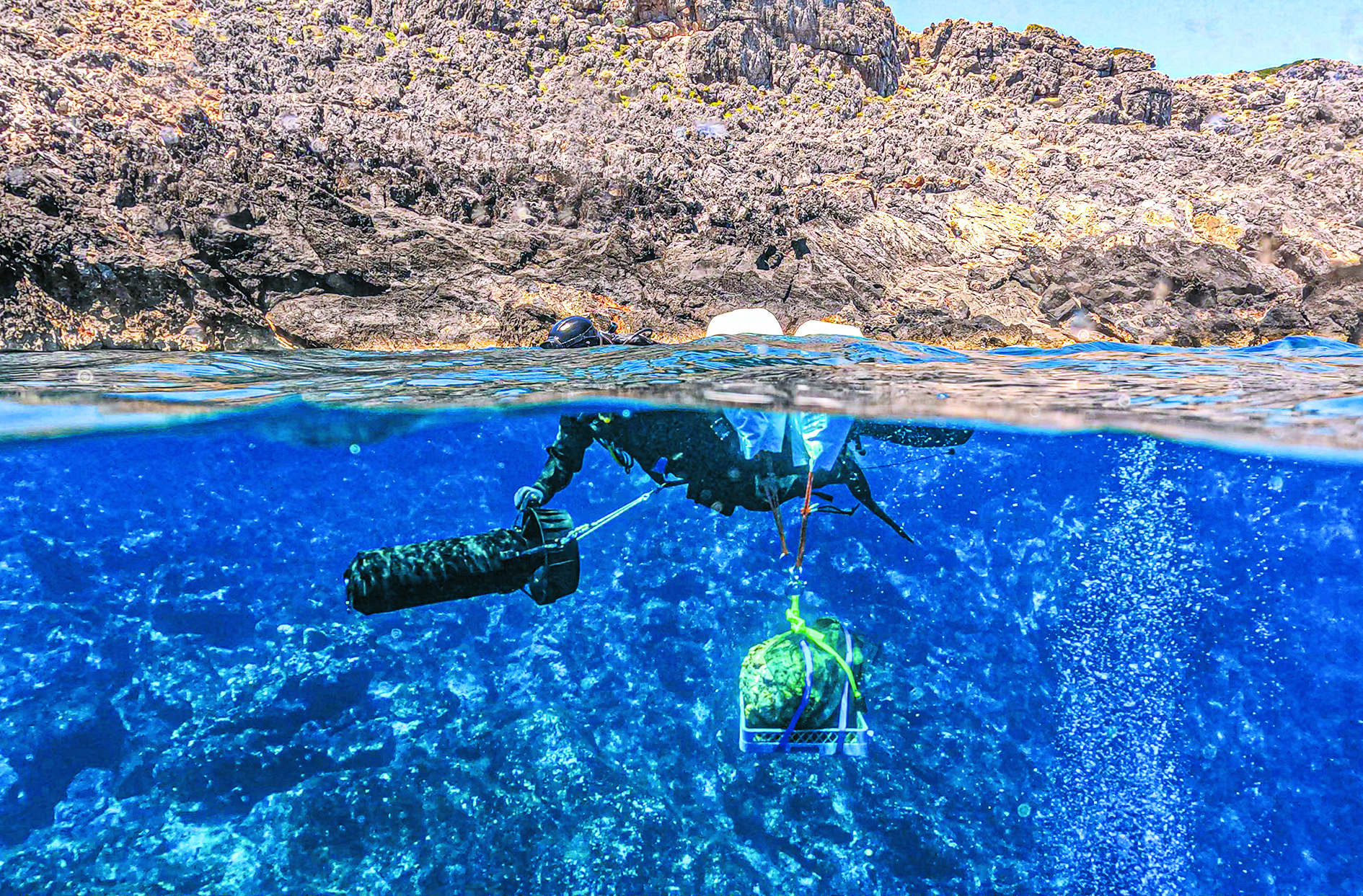
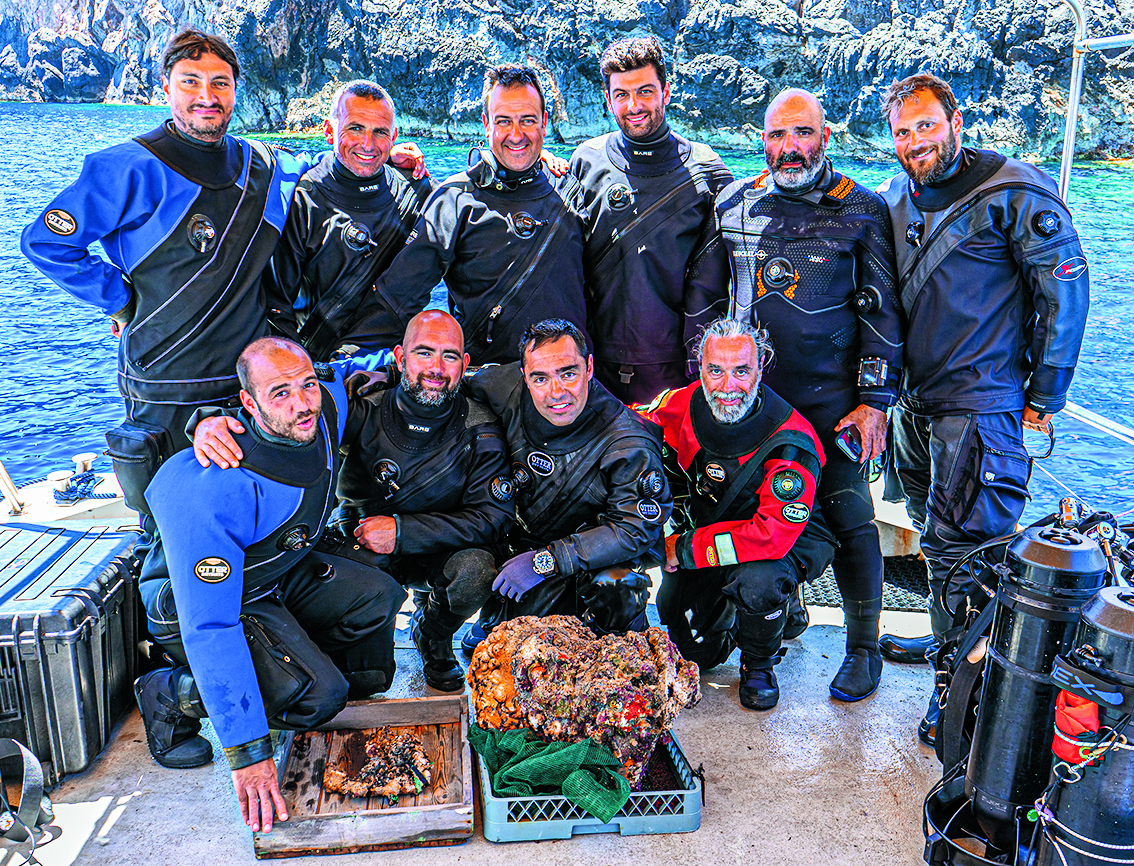
Source: ekathimerini.com


